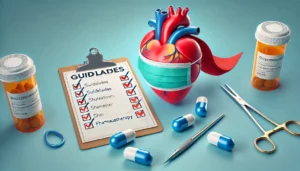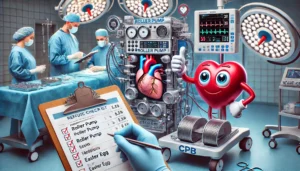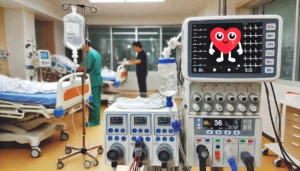The future of the perfusionist profession, a critical component in the field of cardiac surgery, is increasingly uncertain and faces potential challenges that may impact its long-term viability. Perfusionists, highly trained healthcare professionals, operate the heart-lung machine during cardiac surgeries, ensuring the maintenance of blood flow and oxygen levels throughout the body while the heart is temporarily stopped. Despite the crucial role they play, several factors contribute to a potentially bleak long-term outlook for the profession.
Technological Advancements in Surgery:
One of the most significant factors is the rapid advancement in surgical techniques. The field of cardiac surgery is witnessing a paradigm shift towards minimally invasive procedures, including robotic-assisted surgeries. These techniques, such as transcatheter aortic and mitral valve valve replacement (TAVR, TMVR) and endoscopic coronary artery bypass grafting, often do not require the full use of a heart-lung machine. Consequently, the demand for perfusionists in operating rooms could see a substantial decline. As these less invasive methods become more prevalent due to their benefits like reduced recovery times and lower risk of complications, the traditional role of the perfusionist in open-heart surgery may become less central.
Artificial Intelligence and Automation:
Another significant factor is the advent and integration of artificial intelligence (AI) and automated systems in medical procedures. AI’s increasing role in healthcare presents both opportunities and challenges. On the one hand, AI can enhance the capabilities of perfusionists, aiding in real-time decision-making and monitoring during surgeries. On the other hand, the potential for fully automated perfusion systems could reduce the need for human operators. As these technologies continue to evolve and prove their efficacy, hospitals and medical centers might lean towards automation for reasons of cost-efficiency, consistency, and reducing human error.
Economic and Operational Pressures:
The healthcare industry is constantly under economic and operational pressures to reduce costs while improving patient outcomes. Automation and technological advancements offer a way to achieve these goals. Hospitals may invest in technologies that can perform multiple functions with fewer human resources, directly impacting the demand for specialized roles like perfusionists. Moreover, the financial burden of training and maintaining a highly specialized workforce can lead hospitals to seek alternatives that are more economically viable in the long run.
Training and Education Challenges:
The field of perfusion is highly specialized, requiring extensive training and education. However, the uncertainty about the future role of perfusionists may deter new entrants into the profession. This could lead to a decline in the number of professionals entering the field, which in turn impacts the availability of skilled perfusionists. Additionally, the evolving nature of cardiac surgery means that current perfusionists must continually update their skills and knowledge, which can be both challenging and costly.
Potential Areas for Adaptation:
Despite these challenges, it’s essential to recognize potential areas for adaptation and growth within the profession. Perfusionists could expand their expertise to newer areas of cardiac care, including ventricular assist devices and extracorporeal membrane oxygenation (ECMO) therapy. These areas are growing and require the specialized skills that perfusionists possess. Additionally, the role of perfusionists could evolve to include more direct patient care responsibilities or the management of automated systems, ensuring they remain a vital part of the cardiac care team.
Investing in the Perfusion Business:
Investing in the perfusion business carries its own set of risks, primarily due to the rapidly evolving nature of medical technology and surgical practices. As the healthcare industry shifts towards minimally invasive procedures and automated technologies, the traditional need for perfusionists may significantly decrease, potentially leading to reduced demand for services provided by perfusion businesses. This transition poses a financial risk for investors, as the capital invested in training, equipment, and personnel might not yield the expected long-term returns. Furthermore, regulatory changes and advancements in AI and robotics could further diminish the role of human-operated perfusion systems, making such investments risky in a field that is moving towards more technologically advanced and cost-effective alternatives. As a result, investors must carefully consider these factors and the potential for rapid obsolescence in the face of technological innovation and changing industry standards.
Conclusion:
In conclusion, while the future of the perfusionist profession faces significant challenges due to technological advancements and changing surgical practices, there is also room for adaptation and evolution. The profession may need to redefine its role in the context of modern cardiac care, embracing new technologies and expanding its scope to remain relevant and crucial in the healthcare industry. It’s a period of transition, and the resilience and adaptability of the profession will be key to its future sustainability.
- Alternate View: Why the Perfusionist Career Outlook May be Positive







